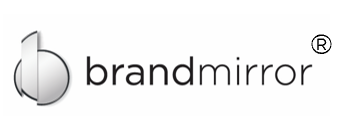Companies and CEOs are faced with challenging choices around their reputation and impact as they look ahead in 2021 and beyond. There is a steady transition in the court of public opinion about how companies need to play a larger leadership role, in addition to what governments are doing. A recent survey by Weber Shandwick, United Minds, and KRC Research shows just over one-third (36%) of Americans “would like businesses and civil society (non-profits and academic institutions, etc.) to play a larger leadership role, in addition to governments.”
Since the murder of George Floyd in 2020, Diversity, Equity, and Inclusion are more top of mind for companies and their employees – forcing these topics to become a priority in the business world. DEI is so important because it has been lacking on a societal level. With the developments of the past few years, particularly the events of 2020, more and more businesses are looking to create or expand their DEI program. In many cases, employees and/or partners may even be demanding action and improvement when it comes to diversity and inclusion. It can feel overwhelming to know where to start and how to be effective. While there are many paths to success – and quite a few ways to fail –here are a few suggestions for DEI in your business.
- DEI Succeeds With Leadership Buy-In
Starting, continuing, and improving DEI efforts in your business takes leadership. DEI efforts that are championed by the C-Suite will be more successful and sustainable, so a visible and substantive commitment to DEI is an imperative leadership role. Effective leadership in DEI starts with creating a culture in which DEI is a priority and a practice. In addition, DEI should be woven through the business and strategic plan as a way of doing business. Leadership must paint a vision for the organization that is credible and provide ways for stakeholders to engage and provide input. A first step lies in the way a leader fosters a safe space. As I discuss in Chapter 10 of my book, Listen: How to Discuss the Difficult Conversations Life Throws at You, “Discussing Race and Racism,” leaders need to be able to learn and listen to the unheard voices on their team.
- Develop a Custom Approach for Your Business
DEI is a practice, not a performance. One company’s solution may not work for another company. Every leader and leadership team will need to carefully consider their situation and identify the right pace of change given their market, culture, skill sets and strengths. What works for a law firm, may not be the right solution for a small business. No organization is going to be perfect, but a successful effort has to be more than a statement of intent. It also needs to avoid tokenism or overreach. Just like any benchmark in a business, a plan with measurable, incremental outcomes can push DEI forward, empower employees and impress potential clients. For example, a business can decide to increase its underrepresented vendor by a certain percentage within a specific time frame. Instead of an arbitrary figure and deadline, a company can assess the usual life cycle of vendor relationships and set a realistic goal that fits with the existing business functionality.
- Foster Empowerment, Allies, and Advocates (Internally and Externally)
Effective DEI looks to all levels and facets of an organization for success, both internally and externally. For instance, studies have shown that front-line leaders within a business are key contributors to a DEI culture, so engaging team leaders on all levels in DEI efforts is critical to success. Also, DEI should be outward-facing and a genuine investment goal. Participating in DEI community activities and consciously seeking to work with vendors owned by underrepresented people puts real time, money, and energy into advancing this priority. Finally, recruiting and promotions should be undertaken with sensitivity and training on ways to consistently incorporate DEI in the process. It is imperative to craft a strategic communication plan that recognizes successes along the way as well as an annual update to key stakeholders. Transparency about progress is fundamental to building and maintaining trust and managing perception and reality.
- Be Positive, Not Punitive
Rather than emphasize a “call-out culture” of publicly identifying and reacting to instances of intolerance, ignorance, or exclusion, a DEI approach that teaches, encourages, supports and uplifts has a larger chance of success. On an individual level, insensitive or bad actors need to be held accountable, but public humiliation rarely works. Rather, a leader can make the individual aware of the problem, explore the underlying cause, and craft a solution that is appropriate to the situation. This solution should include attention to the team impacted by the individual’s actions with meaningful support and a reminder of the expected company norms. Moving to a “we and I” language versus a “you’ language can maintain an inclusive dialogue and keep conversations moving forward.
- DEI is a Good Thing
Not only is it the right thing to do, but DEI also increases the bottom line of a business. Allowing different voices and perspectives to guide the direction of business leads to innovation and profit. Tapping voices at all levels of an organization leads to better relationships and a more cohesive culture. There’s no question that history is not pretty when it comes to this issue, but this need not be the focus of institutional efforts. A positive and affirming focus on the many benefits of DEI makes buy-in attractive and lays a foundation for more successful outcomes.
As we navigate and participate in defining the new normal, we can and should put DEI at the forefront of our business priorities. Doing so takes intention, strategy, and a lot of work. It is worth every bit of the effort.
Jen Dalton is a personal brand specialist with entrepreneurship in her DNA. Her book, Listen: How To Embrace the Difficult Conversations Life Throws at You, is an insightful guide into navigating tough talks. She helps business owners and executives define how they show up as leaders, make the most of their strengths, and tend to their legacy, growth, and visibility. An author, frequent speaker, podcaster, and “Purpose Sherpa,” Jen is a critical resource for any person or company that wants to define their brand and differentiate themselves in authentic, credible, and relevant ways to the market.

